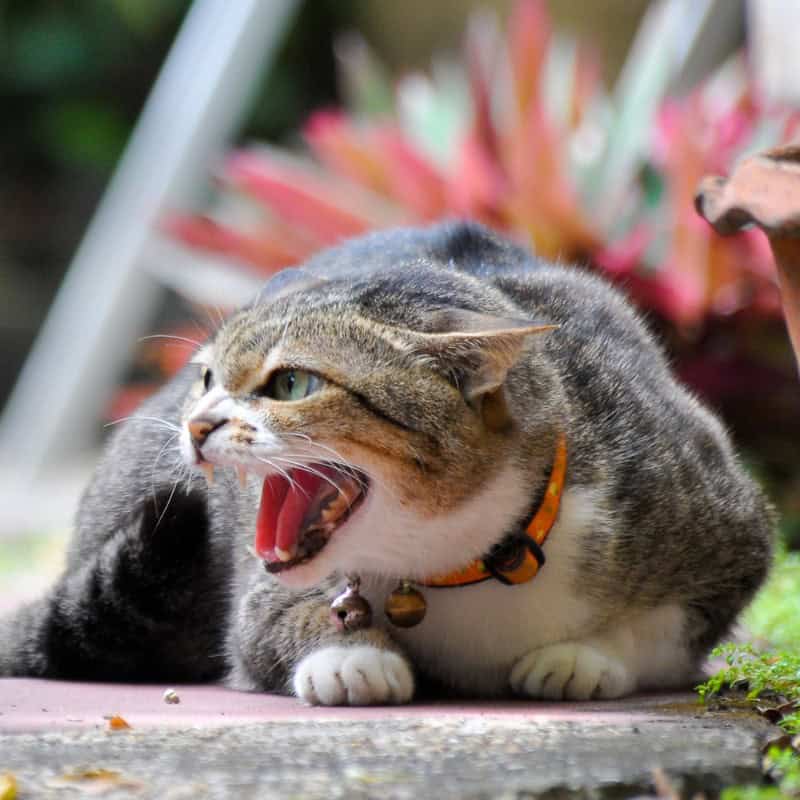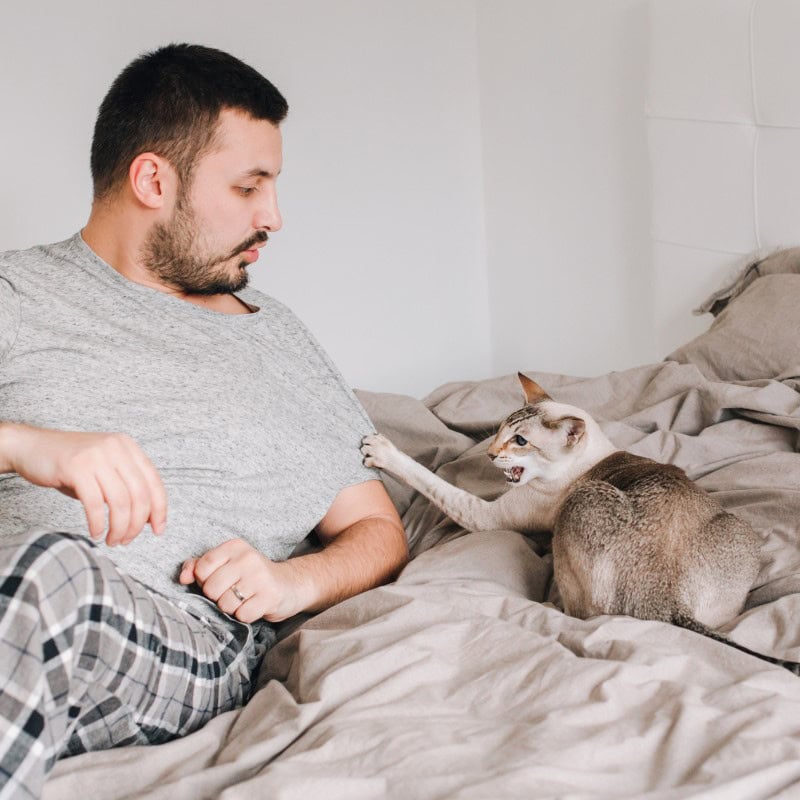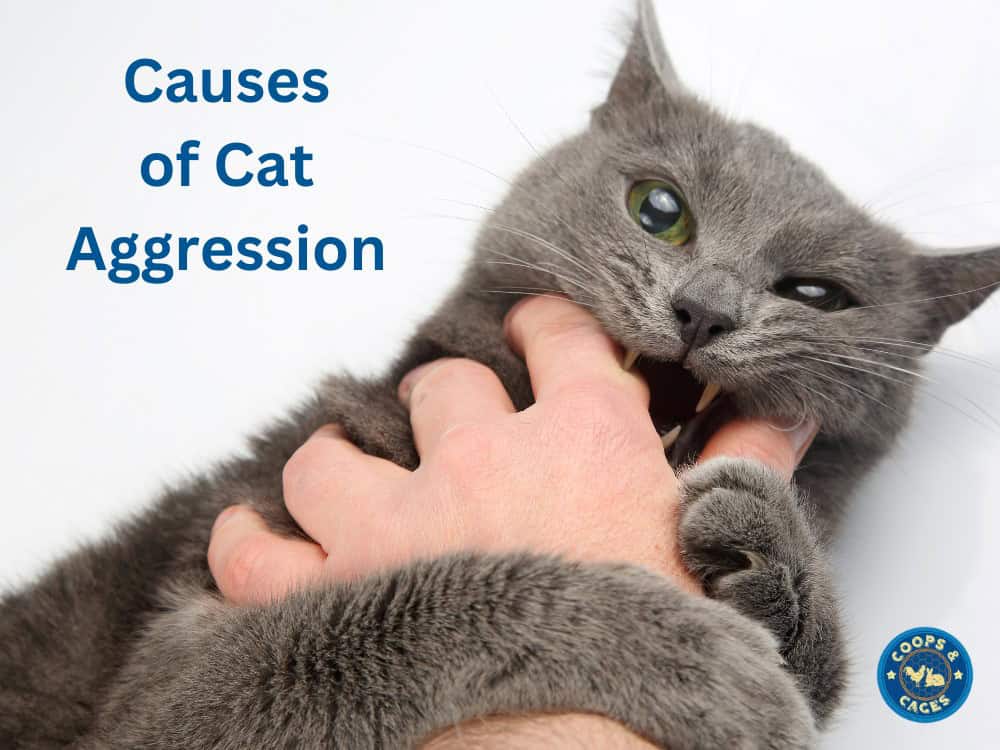Cats
The Different Causes of Cat Aggression
While cats are typically known for their playful and affectionate nature, occasional displays of aggression can leave pet owners feeling puzzled and concerned. Whether directed towards family members, other pets or even visitors, cat aggression can pose challenges and safety risks within the household.
In this comprehensive guide, we aim to delve into the multifaceted reasons behind feline aggression, exploring both physical triggers and underlying psychological factors.
By gaining insight into the root causes of your cat’s behaviour, you can effectively address and manage their aggression, fostering a harmonious and peaceful environment for both feline companions and their human counterparts.
Join us as we navigate through this important topic, offering practical solutions and expert advice to support you in nurturing a healthy relationship with your beloved pet.
Physical Causes of Cat Aggression
Before you assume that your cat is just a mean old kitty, it is important to consider that it might be suffering from a medical condition.
If you have a docile and playful cat that is usually friendly, but then suddenly hisses when you try to handle him, then it might be suffering from physical pain.
Consulting with a veterinarian for a thorough examination is crucial to identify and address any underlying physical ailments contributing to your cat’s aggression.
A Non-Visible Injury
If your typically gentle cat suddenly exhibits aggressive behaviour, it could signal underlying non-visible wounds. Cats are experts at masking pain, making it challenging to detect injuries through visual inspection alone.
Internal discomfort or musculoskeletal issues such as arthritis can manifest as aggression when touched or approached, as the cat may perceive interaction as a threat to their well-being.
Observing changes in mobility, reluctance to be handled, or signs of discomfort during specific movements can provide clues to potential injuries.
Dental Pain
Dental pain is a common yet often overlooked cause of aggression in cats. Just like humans, cats can suffer from dental issues such as gingivitis, periodontal disease and tooth decay.
When a cat experiences discomfort in their mouth, they may lash out in aggression, especially if touched near the affected area.
Signs of dental pain include reluctance to eat, drooling, pawing at the mouth and foul breath.
Additionally, observing changes in grooming habits, such as neglecting to groom areas around the face, can indicate oral discomfort.
Regular dental check-ups with a vet, dental treats, and providing chew toys can help prevent dental disease and minimise the risk of aggression stemming from dental pain.
Hyperthyroidism
Hyperthyroidism, characterised by an overproduction of thyroid hormones, can trigger significant behavioural changes in cats, including aggression. This condition disrupts the body’s hormonal balance, leading to restlessness and irritability in affected felines.
Alongside aggression, cats with hyperthyroidism may exhibit increased thirst and urination, weight loss, vomiting, and diarrhea. These symptoms often manifest gradually, making them easy to overlook.
If you observe such behavioural and physical changes in your cat, prompt veterinary attention is crucial.

Psychological Causes of Cat Aggression
Before jumping to conclusions about your cat’s behaviour, it’s essential to explore potential psychological factors contributing to their aggression. While physical pain can certainly influence feline behaviour, cats may also exhibit aggression due to psychological distress or environmental stressors.
Understanding these psychological triggers is key to effectively managing and mitigating aggressive behaviour.
Ask yourself “Have there been any changes that could trigger the way my cat is behaving right now?”
New Cat, Pet or Family Member
The addition of a new cat, pet or family member to your household can disrupt the established dynamics and trigger feelings of insecurity in your cat, potentially leading to aggression.
Cats are creatures of habit and may feel threatened by the presence of unfamiliar individuals or animals encroaching on their territory.
Signs that your cat’s aggression stems from this adjustment include hissing, growling or avoiding interaction with the newcomer.
To address this issue, provide your cat with a safe space where they can retreat and feel secure, such as a cosy bed, cat cave or secluded area away from the new arrival. Gradually introduce the new member to your cat, allowing them to acclimate at their own pace.
With time and patience, your cat may overcome their initial apprehension and accept the newcomer, restoring peace and harmony within your household.
Changes in Their Environment
Changes in a cat’s environment, such as moving to a new house, introducing new furniture, rearranging existing furniture or nearby construction, can evoke feelings of anxiety and trigger aggressive behaviour.
Cats thrive on familiarity and routine, so disruptions to their environment can cause stress and insecurity.
Signs that your cat’s aggression is linked to environmental changes include excessive hiding, increased vocalisation, or destructive behaviour.
To help your cat adapt, maintain a consistent routine and gradually introduce changes to their surroundings. Providing familiar objects, such as bedding or toys, can offer comfort and stability during transitions.
Additionally, create safe spaces where your cat can retreat and feel secure amidst the changes.
Changes in Their Routine
Changes to a cat’s routine, such as alterations in feeding times, variations in departure or arrival schedules, or disruptions to regular play sessions, can trigger stress and provoke aggressive behaviour.
Cats thrive on predictability and structure, so deviations from their established routines can disrupt their sense of security and stability.
Signs that your cat’s aggression is linked to changes in routine may include increased vocalisation, avoidance behaviour, or heightened irritability.
To minimise stress and aggression, strive to maintain consistency in your cat’s daily schedule and gradually introduce any necessary changes. Providing enrichment activities and positive reinforcement can also help alleviate anxiety and promote a sense of routine and stability for your feline companion.
New Mum Aggression
New mother aggression, observed in female cats after giving birth, stems from heightened maternal instincts aimed at protecting and nurturing their kittens.
While mother cats typically exhibit nurturing behaviour towards their offspring, they may display aggression towards perceived threats to their litter’s safety.
Signs of new mother aggression include hissing, growling or swatting at anyone or anything perceived as a potential danger to the kittens.
Understanding and respecting the mother cat’s protective instincts are essential during this period. Minimise disturbances around the nesting area, avoid handling the kittens excessively, and provide a calm and secure environment to support the mother cat in caring for her young.

Ian’s Wrap
Understanding the causes of cat aggression is crucial for fostering a harmonious relationship between pet owners and their feline companions.
While physical ailments such as non-visible injuries, dental pain, and hyperthyroidism can contribute to aggression, it’s equally important to consider psychological factors such as adjustments to the environment, routine changes, and new mother instincts.
By recognising the signs and addressing triggers, pet owners can effectively manage and alleviate their cat’s aggressive behaviour. Whether through veterinary care, environmental adjustments or patient understanding, providing a supportive and nurturing environment is essential for promoting the well-being and happiness of our beloved feline friends.



